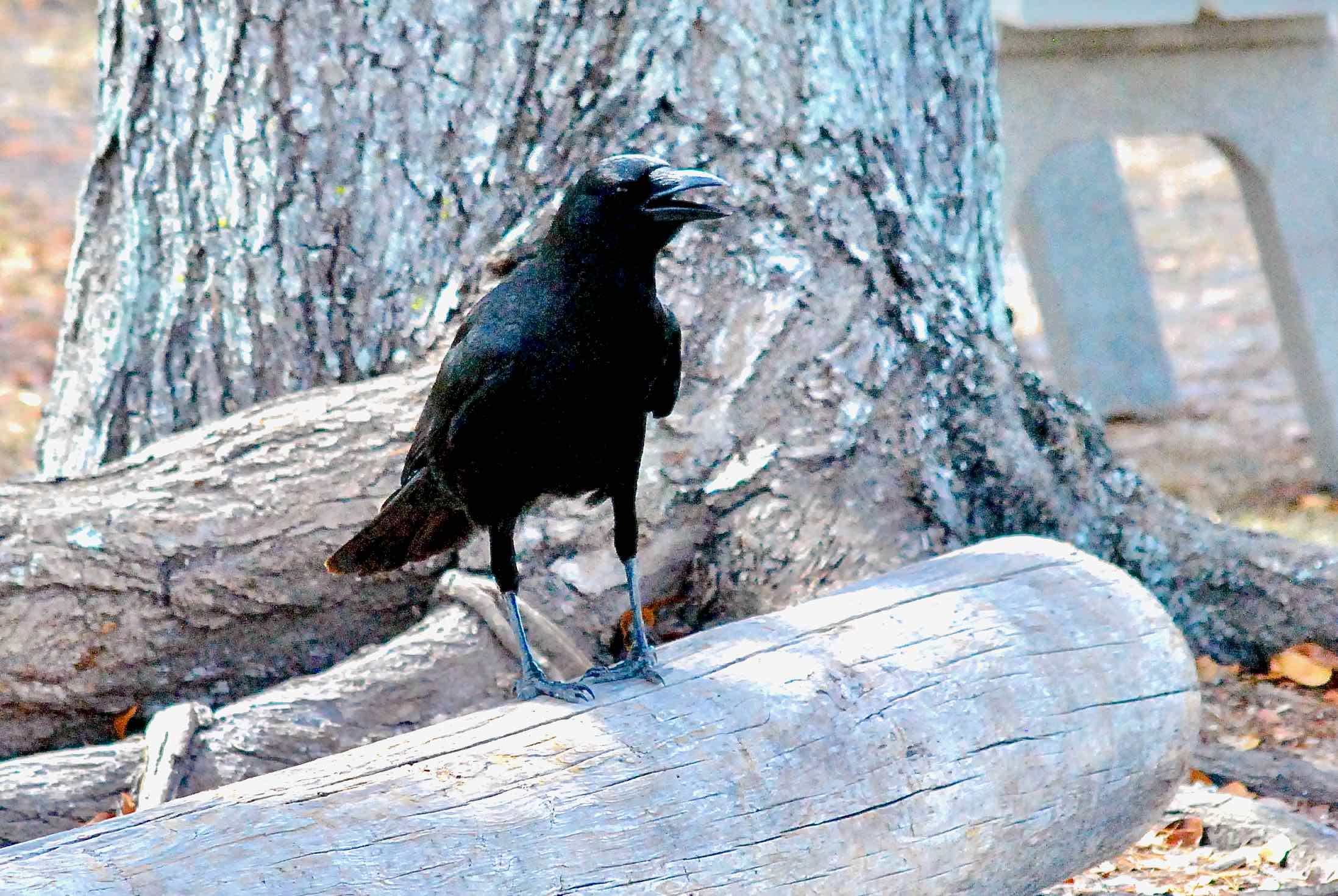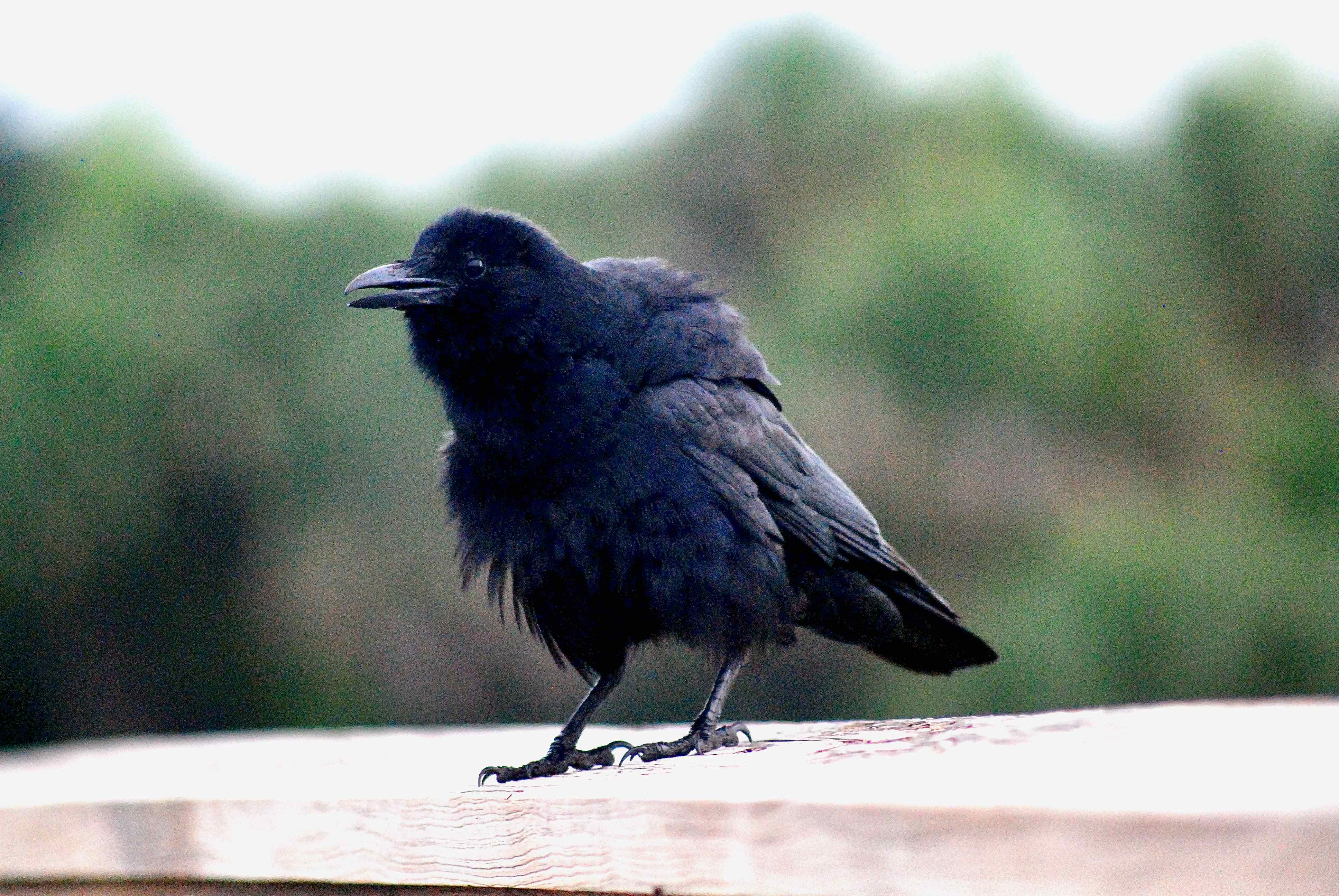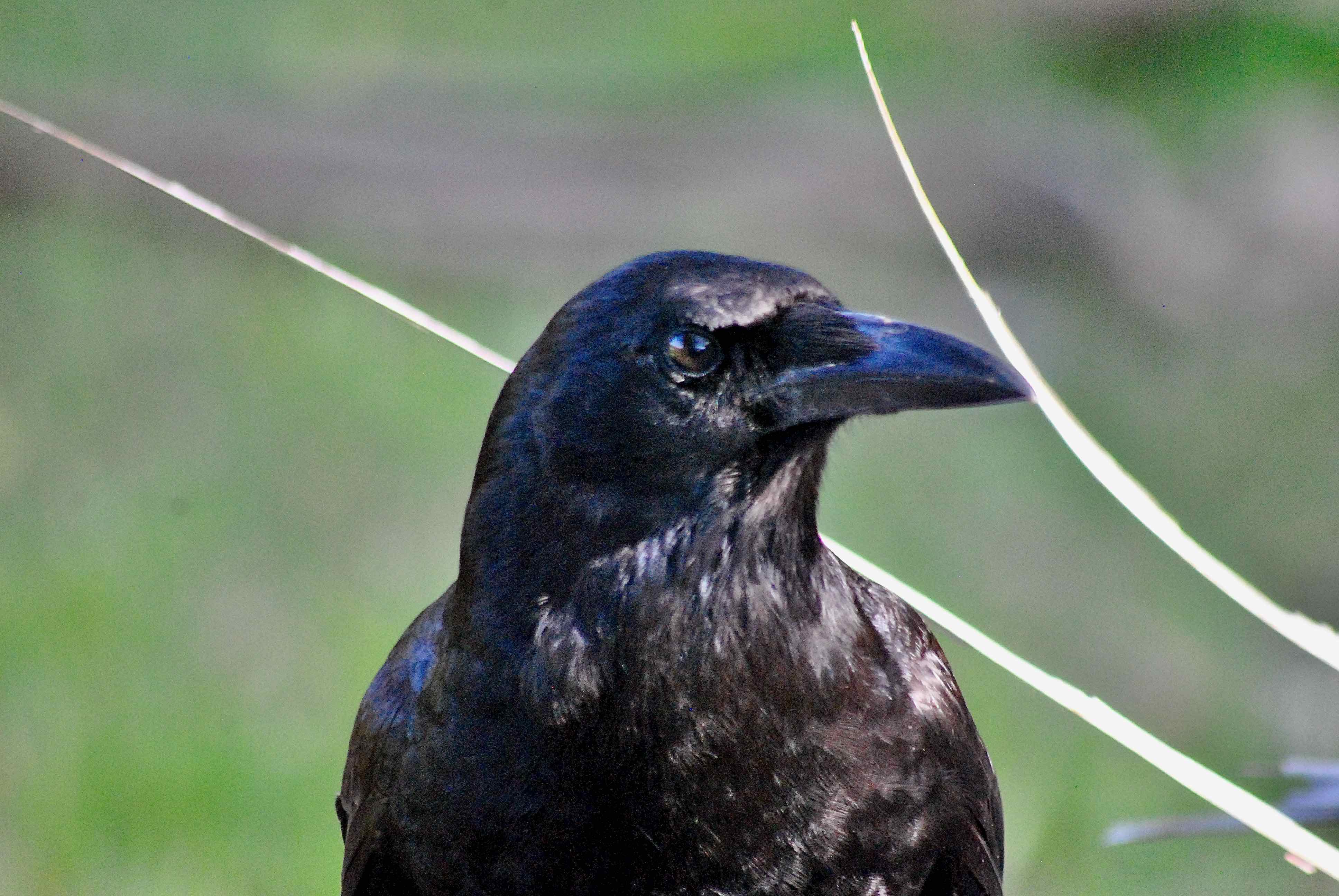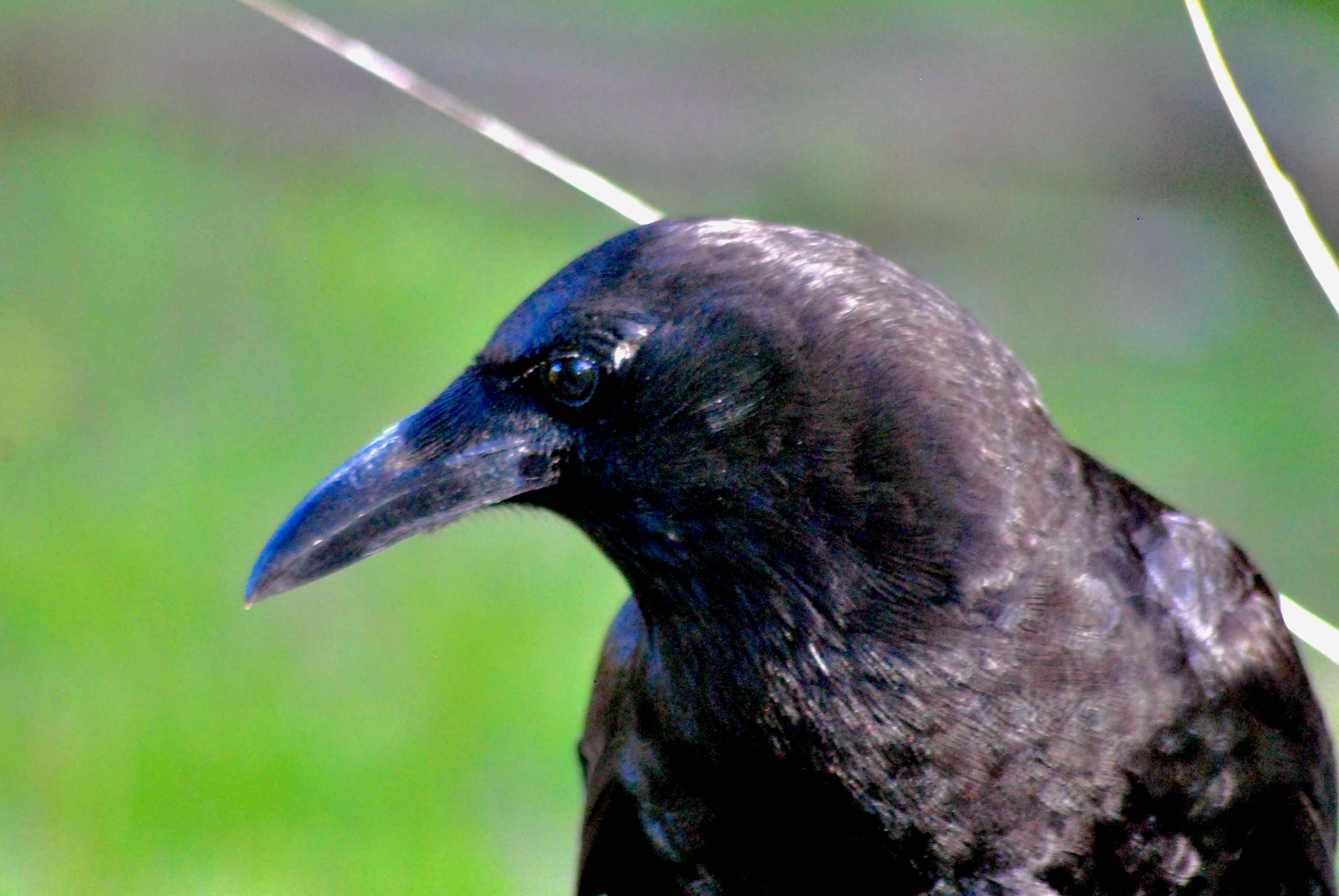
American crow, photographed at Shark Valley, Everglades National Park, Miami-Dade County, in April 2015.
The American crow, Corvus brachyrhynchos, is at once hated and admired. Hated as a nuisance; admired for its intelligence. The phrase, bird brain, doesn't quite carry the same insult when you think about the crow.
Crows are found in Florida year round, as they are in most of the country. There is a population that migrates northward to Canada to breed, and inflates Florida's population in winter, but for the most part this bird tends to stay put throughout the year regardless of where it lives.
There are two subspecies found in the state, and they are divided by geography: C. b. brachyrhynchos in the Panhandle and C. b. pascuus in the Peninsula. There's also a second species found in Florida, the fish crow, C. ossifragus, which is slightly smaller than the American but not enough to reliably distinguish the two visually. The best method, according to the Peterson Field Guide: their calls.
They are fairly large birds, with a stocky body and neck and stout bill. They can be be as long as 16 inches, with a wingspan that exceeds three feet. They are entirely black, from bill to toe. The tips of their wings spread like fingers in flight and are rounded.
Crows will eat just about anything. They have a reputation as agricultural pests, but they actually are a benefit to farmers. Insects, snails, worms, snakes, seeds and berries are on their menu. As are small birds, roadkill and garbage. They mostly forage on the ground but will scavenge in dumps and along roads.
Their normal habitats include farms, fields and open woods, but they are extremely adaptable and can get along just fine in city parks. They gather in huge numbers to roost in the winter — according to Cornell Laboratory of Ornithology, they can be in the hundreds to the millions. But, according to the Florida Fish and Wildlife Conservation Commission, here in the Sunshine State, crows are more likely to be seen in small, family groups rather than in huge gatherings.
They are loud birds, annoyingly loud, some might say. Their habits have driven some to dynamite their roosts hoping to get rid of them.
They nest high in shrubs and trees, either in a crotch where the trunk splits or at the base where limbs meet the trunk.
In Florida, nesting season runs between February and May. Both sexes build the nest, which is made of sticks, bark, vegetation and mud and lined with softer materials such as grass and feathers. Females lay one or two clutches a season, each between four and six eggs. They require 18 days of incubation handled mostly or even exclusively by the female.
Crows have to be at least two years old and usually four before they are sexually mature. Younger crows will hang with their parents and help raise their hatchling siblings. By four or five weeks, the hatchlings become fledglings.
Odd as it might first seem, American crows don't nest much in Brevard, Broward and Palm Beach counties, mainly because of a lack of suitable habitat. A census of nesting birds done in the late 1980s and early '90s found them absent from the Keys as well. We note, however, that we've seen them in substantial numbers in South Palm Beach County, where we live. What might have changed, if anything, to cause crow numbers to increase substanitally? Beats us.
How smart are American crows? Smart enough to use tools, according to Cornell. Smart enough to work together to find food. Smart enough to collectively defend themselves against threats.
American crows are members of Corvidae, the crow and jay family.
Shark Valley, Everglades National Park



